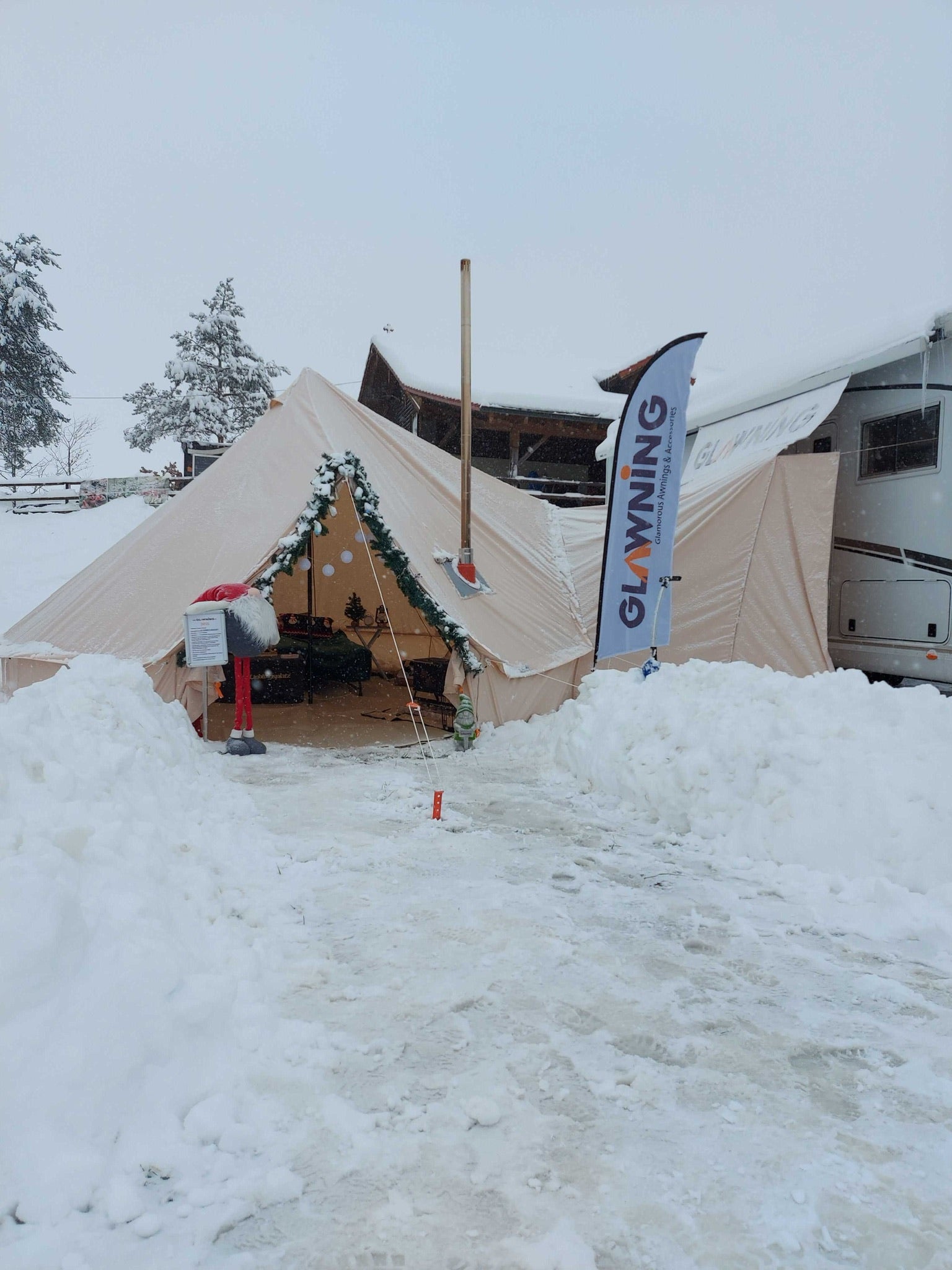The Most Robust Driveaway Campervan Awning? Top Tips for Bad Weather Tent Pitching

Storm Isha, Storm Agnes, Babet, Ciaran, Debi, Elin, Fergus, Gerrit and Henk. They're coming thick and fast aren't they?
Whilst we don't recommend pitching in a storm with a name read on for top tips when tent pitching for inclement weather plus reasons why you'll want to be in a glawning if you happen to get caught out this season:
We prefer customers to leave the extreme weather testing to us but sometimes you just don't have time to pack up before the galeforce winds come. Thankfully due to the structure of our glawnings and the strength of their polycotton and poles they're often the last tent standing on a stormy site.
In terms of adverse weather, our tents are independently lab tested to EN ISO 5912:2020. This international test standard is designed specifically for camping tents and provides for 3 categories of tent, namely: level 1 (designed for infrequent and short term use in mainly fair weather), level 2 (suitable for use in poor, wet and windy conditions) and level 3 (designed for mountaineering, expeditions and snow loading).
Our glawnings are tested to performance level 2, which includes a tear resistance test and a breaking strength test on all the fabrics to ISO 13937-2 and ISO 13934-2 standards, respectively. They also undergo a water penetration test and testing on the amount of force the tent can withstand before it fails. These tests were most recently carried out and passed during 2023.
In addition to the above, we also have our own experience and the testimony of many customers - both of which tell us that the Glawning stands up extremely well to adverse weather, and is usually the last tent standing.
Here's storm Eunice giving it her best shot at the glawning in our garden in 2022 to give you an idea of how well they withstand the elements.
Don't take our word for it though, read the reviews:
Albert Procter (September 2023) says "Believe what you read...The quality of the awning is unbelievable. We’ve been at Tenby South Wales where we stayed on a campsite overlooking the sea. The winds on Saturday night reached 60mph, all the tents onsite got wrecked but the glawning stood strong with only a couple of pegs being pulled out of the ground. I couldn’t believe there were no rips in the material after such a bad night. So if you’ve any concerns on the quality of these awnings then rest assured they’ll withstand the strongest of winds."
Spiral Wood (February 2023) says "My partner camps for 6 months of the year and the glawning has weathered every season with no complaints! If this one ever gives up then we would definitely buy again but there is no sign of that."
The Indie Projects and A Bus and Beyond go way back with testing the glawning in The Beast from the East on You Tube in our early days.
More where they came from on Trustpilot here.
Top Tips for Best Pitching Your Glawning or Bell Tent for Stormy Weather (keep an eye on the weather forecast and if you can take it down then do so but if not these are the best ways of ensuring it against orbit):
- Always try and pitch on higher ground if you can to discourage water from flowing in.
- Ensure the stakes at the end of the guy lines are driven in at a 45 degree angle. Use a mallet if necessary.
- Ensure the guy lines have room to move around e.g. don't pin them into the ground. They need some leverage to absorb and manouvre with the gusts.
- Keep checking the tension on the guy ropes is taut - if they start to go floppy you'll lose the structure of the tent.
- Keep the doors zipped up securely - if a gust gets in and whips the door open the tent can become a big sail.
- Consider purchasing a variety of peg sets for different ground. Lightweight pegs won't always cut it and you may need some of these too.
- Take down your stove flue in severe storms.
- For particularly heavy rain consider investing in an over tarp (or glambrella as we call them) for extra protection against the downpours - works for UV protection as well.
- Make sure the rain caps are firmly on the Aframe spikes.
- Take some old towels, jugs, repair kits and even some plastic sheeting just in case.
- A footprint or tarp underneath your tent will make life easier when packing away - especially if the campsite has turned swamp!
If there does happen to be a little rip or a tear in the fabric fear not! Polycotton is easily repaired by a local seamstress/sail maker/tent repairer for a reasonable price. We sell repair kits here which can be used for a DIY job too.This is a driveaway awning that's built to last.
Thank you to our lovely customers Matthew, Amanda and Thomas for these great snow day pics.









Leave a comment